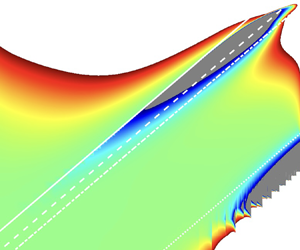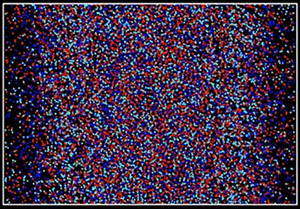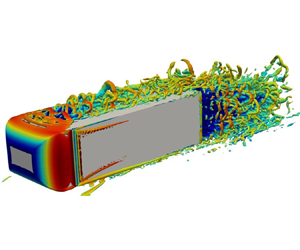Refine listing
Actions for selected content:
1418667 results in Open Access
Putting infection on the map: Using heatmaps to characterise within- and between-host distributions of trematode metacercariae
-
- Journal:
- Journal of Helminthology / Volume 97 / 2023
- Published online by Cambridge University Press:
- 10 November 2023, e84
-
- Article
-
- You have access
- Open access
- HTML
- Export citation
Grounding-line flux conditions for marine ice-sheet systems under effective-pressure- dependent and hybrid friction laws
-
- Journal:
- Journal of Fluid Mechanics / Volume 975 / 25 November 2023
- Published online by Cambridge University Press:
- 10 November 2023, A6
-
- Article
- Export citation
Bloodstream infections in prolonged use of axillary-placed, intra-aortic balloon-pump support: A single-center study
-
- Journal:
- Infection Control & Hospital Epidemiology / Volume 45 / Issue 3 / March 2024
- Published online by Cambridge University Press:
- 10 November 2023, pp. 374-376
- Print publication:
- March 2024
-
- Article
- Export citation
Research on the implementation and practice of the CCAMLR System of Inspection
-
- Journal:
- Polar Record / Volume 59 / 2023
- Published online by Cambridge University Press:
- 10 November 2023, e35
-
- Article
-
- You have access
- Open access
- HTML
- Export citation
PERFORMANCE OF EMPIRICAL RISK MINIMIZATION FOR LINEAR REGRESSION WITH DEPENDENT DATA
-
- Journal:
- Econometric Theory / Volume 41 / Issue 2 / April 2025
- Published online by Cambridge University Press:
- 10 November 2023, pp. 391-420
-
- Article
-
- You have access
- Open access
- Export citation
Factors Associated With Delayed Pre-Hospital Times During Trauma-Related Mass Casualty Incidents: A Systematic Review
-
- Journal:
- Disaster Medicine and Public Health Preparedness / Volume 17 / 2023
- Published online by Cambridge University Press:
- 10 November 2023, e525
-
- Article
-
- You have access
- Open access
- HTML
- Export citation
Towards a post-imperial and Global IR?: Revisiting Khatami’s Dialogue among Civilisations
-
- Journal:
- Review of International Studies / Volume 51 / Issue 1 / January 2025
- Published online by Cambridge University Press:
- 10 November 2023, pp. 159-178
- Print publication:
- January 2025
-
- Article
-
- You have access
- Open access
- HTML
- Export citation
Coping with international politics: A case study of Hong Kong
-
- Journal:
- Review of International Studies / Volume 50 / Issue 4 / July 2024
- Published online by Cambridge University Press:
- 10 November 2023, pp. 741-759
- Print publication:
- July 2024
-
- Article
-
- You have access
- Open access
- HTML
- Export citation
ChatGPT: Increasing accessibility for natural language processing in healthcare quality measurement
-
- Journal:
- Infection Control & Hospital Epidemiology / Volume 45 / Issue 1 / January 2024
- Published online by Cambridge University Press:
- 10 November 2023, pp. 9-10
- Print publication:
- January 2024
-
- Article
- Export citation
Prevalence of hospital-associated infections and its association with discharge destinations and hospital readmissions in Brussels, Belgium, from 2008 to 2020: A hospital-based, cross-sectional study
-
- Journal:
- Infection Control & Hospital Epidemiology / Volume 45 / Issue 4 / April 2024
- Published online by Cambridge University Press:
- 10 November 2023, pp. 434-442
- Print publication:
- April 2024
-
- Article
- Export citation
A rare combination: a single common pulmonary vein with polysplenia syndrome
-
- Journal:
- Cardiology in the Young / Volume 34 / Issue 1 / January 2024
- Published online by Cambridge University Press:
- 10 November 2023, pp. 194-197
-
- Article
- Export citation
Energy cascade in the Garrett–Munk spectrum of internal gravity waves
-
- Journal:
- Journal of Fluid Mechanics / Volume 975 / 25 November 2023
- Published online by Cambridge University Press:
- 10 November 2023, A11
-
- Article
-
- You have access
- Open access
- HTML
- Export citation
Implementation of multidrug-resistant bacterial testing to prioritize duodenoscope sterilization: Experience from a high-volume health system
-
- Journal:
- Infection Control & Hospital Epidemiology / Volume 45 / Issue 3 / March 2024
- Published online by Cambridge University Press:
- 10 November 2023, pp. 397-399
- Print publication:
- March 2024
-
- Article
- Export citation
Ernst Rudolf Kochne. Die unbeabsichtigte Republik: Deutschösterreich 1918–1920 Hamburg: Verlag Dr. Kovač, 2020. Pp. 250.
-
- Journal:
- Austrian History Yearbook / Volume 55 / May 2024
- Published online by Cambridge University Press:
- 10 November 2023, pp. 487-488
- Print publication:
- May 2024
-
- Article
- Export citation
Cross-stream oscillations in the granular flow through a vertical channel
-
- Journal:
- Journal of Fluid Mechanics / Volume 975 / 25 November 2023
- Published online by Cambridge University Press:
- 10 November 2023, A10
-
- Article
-
- You have access
- Open access
- HTML
- Export citation
Do Urban City Trauma Centers Suffice as Pre-Deployment Training and Post-Deployment Skills Retaining Centers?
-
- Journal:
- Disaster Medicine and Public Health Preparedness / Volume 17 / 2023
- Published online by Cambridge University Press:
- 10 November 2023, e526
-
- Article
-
- You have access
- Open access
- HTML
- Export citation
Politics in the street: the materiality of urban public spaces in Renaissance Italy
-
- Journal:
- Urban History / Volume 52 / Issue 1 / February 2025
- Published online by Cambridge University Press:
- 10 November 2023, pp. 38-61
-
- Article
-
- You have access
- Open access
- HTML
- Export citation
Wake bi-modality: the effect of upstream boundary layer dynamics
-
- Journal:
- Journal of Fluid Mechanics / Volume 975 / 25 November 2023
- Published online by Cambridge University Press:
- 10 November 2023, A7
-
- Article
- Export citation
Creative destruction, human capital accumulation, andgrowthin a digital economy
-
- Journal:
- Macroeconomic Dynamics / Volume 28 / Issue 5 / July 2024
- Published online by Cambridge University Press:
- 10 November 2023, pp. 1206-1230
-
- Article
- Export citation















